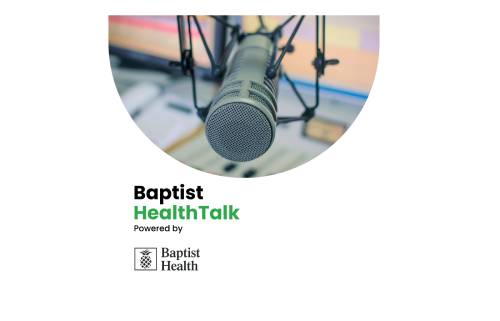
Science
Roundup: Breakthrough Study Identifies ‘Long COVID’ in Blood Samples; Obesity Rates at 35% or Higher in 22 States; and More News
5 min. read
Written By: John Fernandez
Published: September 29, 2023
Written By: John Fernandez
Published: September 29, 2023
Researchers Find Blood Biomarkers for “Long COVID” to Facilitate Diagnosis, Treatment
Researchers have found specific blood biomarkers for “long COVID” which is a precursor to a blood test that could facilitate diagnosis and treatment, according to a new study led by the Icahn School of Medicine at Mount Sinai and the Yale School of Medicine.
The research, published in Nature, is the first to show clear differences in immune and hormone function in patients with long COVID.
Long COVID, broadly defined as signs, symptoms, and conditions that continue or develop over weeks or months following initial COVID-19 infection. “People with Long COVID may experience health problems from different types and combinations of symptoms that may emerge, persist, resolve, and re-emerge over different lengths of time,” states the U.S. Centers for Disease Control and Prevention (CDC).
The CDC estimates that one in 13 adults (or 7.5 percent) in the U.S. has long COVID symptoms lasting more than three months. Many of these patients have no clear cause for their symptoms. Some of the symptoms most commonly cited include cognitive impairment or “brain fog,” extreme fatigue, shortness of breath, and chronic pain.
“These findings are important (because) they can inform more sensitive testing for long COVID patients and personalized treatments for long COVID that have, until now, not had a proven scientific rationale,” said principal investigator David Putrino, Ph.D., professor of Rehabilitation and Human Performance and director of the Abilities Research Center at Icahn Mount Sinai.
Researchers analyzed a total of 271 patients from three sites —The Mount Sinai Hospital, Mount Sinai Union Square and Yale School of Medicine — between January 2021 and June 2022. Each patient was asked to complete a detailed set of questionnaires about their symptoms, medical history, and health-related quality of life.
The researchers took blood samples from all patients, identified biomarker differences and similarities among three groups of patients. The three groups included those with no prior COVID infection; those who had fully recovered from a clinically confirmed case of COVID-19; and those with active long COVID symptoms for at least four months.
“Overall, the algorithm was able to differentiate between people with and without long COVID with 96 percent accuracy and detect the condition based on distinctive features detected in the blood of participants in the long COVID group,” states a news release by the Icahn School of Medicine at Mount Sinai in New York City.
‘Urgent Priority’ – U.S. Adult Obesity Rates in 22 States at 35% or Higher, CDC Finds
Obesity rates in the U.S. continue to surge. New data from 2022 finds that 22 states have an adult obesity prevalence at or above 35 percent, compared to 19 states in 2021, according to the U.S. Centers for Disease Control and Prevention (CDC).
Just ten years ago, no state had an adult obesity prevalence at or above 35 percent, the CDC states. All states and territories had an obesity prevalence higher than 20 percent (more than 1 in 5 adults).
“Our updated maps send a clear message that additional support for obesity prevention and treatment is an urgent priority,” said Karen Hacker, M.D., director of the CDC’s National Center for Chronic Disease Prevention and Health Promotion, in a statement. “Obesity is a disease caused by many factors, including eating patterns, physical activity levels, sleep routines, genetics, and certain medications.”
State-based adult obesity prevalence is based on self-reported height and weight data from the Behavioral Risk Factor Surveillance System. Adults with obesity are at increased risk for many other serious health conditions, including as heart disease, stroke, type 2 diabetes, some cancers, severe outcomes from COVID-19, and poor mental health, the CDC states.
The 22 states with an adult obesity prevalence at or above 35 percent are: Alabama, Arkansas, Delaware, Georgia, Indiana, Iowa, Kansas, Kentucky, Louisiana, Mississippi, Missouri, Nebraska, North Dakota, Ohio, Oklahoma, South Carolina, South Dakota, Tennessee, Texas, Virginia, West Virginia, and Wisconsin. A
An individual with a body mass index (BMI) equal to or greater than 30 ( ≥30 kg/m2) is considered obese.
Young adults were half as likely to have obesity as middle-aged adults. Adults aged 18–24 had the lowest prevalence of obesity (20.5 percent) compared to adults aged 45–54, who had the highest prevalence (39.9 percent), the CDC states.
Ultra-processed Foods Linked to Greater Risk of Depression in Women
Ultra-processed foods and drinks, especially if artificially sweetened, are now linked to a higher risk of depression in women, according to a new study.
Researchers analyzed the diets of nearly 32,000 middle-aged female nurses as part of the Nurses’ Health Study II, a longitudinal study on women’s health. Those who consumed more than nine portions of such food or drinks a day had about a 50 percent higher risk for developing depression, compared to those having four portions or less.
When the researchers looked at specific ultra-processed foods, or UPFs, primarily foods and drinks made with artificial sweeteners were linked to an increased risk of depression among study participants, who were aged 42 to 62 years. The study, conducted by investigators at Brigham and Women’s Hospital and the Harvard T.H. Chan School of Public Health in Massachusetts, was published in the journal JAMA Network Open.
The researchers controlled for a several other potential causes of depression, such as age, body mass index (BMI), total calories, menopausal hormone therapy, use of alcohol, sleep duration, pain, and other diseases, such as diabetes and hypertension.
The study states: "Participants with high UPF intake had greater BMI, higher smoking rates, and increased prevalence of comorbidities like diabetes, hypertension, and dyslipidemia and were less likely to exercise regularly."
Ultra-processed foods that are packaged with formulations made of little or no whole foods now make up an estimated 57 percent of total daily calories consumed by U.S. adults, previous studies have found. Recent studies have linked eating regularly consumption UPFs to a higher risk of heart disease and early death.
UPFs usually contain ingredients such as preservatives, emulsifiers, sweeteners, and artificial colors and flavors. In addition to ready-to-heat packaged meals, examples of ultra-processed foods include ice cream, ham, sausages, crisps, mass-produced bread, some cereals, carbonated drinks, some yogurts, instant soups, and some alcoholic drinks. They include many ready-to-heat products, such as ultra-prepared pies, pasta, and pizza dishes.
These foods can contribute to being overweight or obese, which is a major risk factor for heart disease.
Healthcare that Cares
Related Stories
View All Articles
Roundup: Women may Benefit More from Regular Exercise Than Men; Long COVID’s Link to Chronic Fatigue Syndrome; and More News
February 23, 2024
5 min. read

